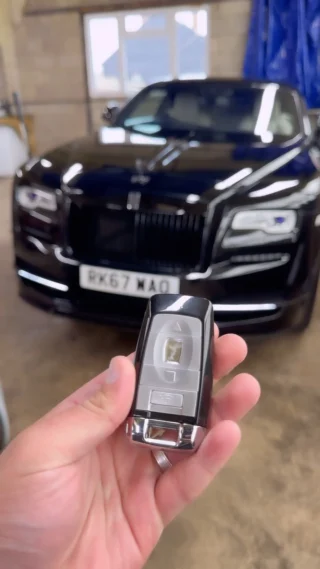This company has no active jobs
0 Review
Rate This Company ( No reviews yet )
About Us
See What Immobilizer Key Repair Tricks The Celebs Are Making Use Of
Immobilizer Key Repair: A Comprehensive Guide
Introduction
The contemporary automotive landscape functions significantly intricate anti-theft systems, with immobilizers being an essential component in vehicle security. An immobilizer key consists of a transponder chip that interacts with the vehicle’s ignition system to guarantee that only licensed keys can start the engine. However, much like any mechanical part, immobilizer keys are vulnerable to wear and malfunction. This post explores the intricacies of immobilizer key repair, going over typical problems, repair options, cost considerations, and often asked concerns.

Comprehending Immobilizer Keys
Before diving into repair options, it’s vital to comprehend how immobilizer keys work:

- Transponder Technology: Each immobilizer key contains a distinct transponder chip. When the key is inserted into the ignition, it sends out a coded signal to the vehicle’s Engine Control Unit (ECU).
- Authorization Process: The ECU confirms the signal’s authenticity. If valid, it allows the vehicle to start; if not, the engine stays paralyzed.
- Types of Keys: Immobilizer keys can be classified into a number of types:
- Traditional Key with Transponder: Standard key style with embedded transponder.
- Smart Key: Keyless entry systems that allow push-button start without physical insertion.
- Key Fob: Combined remote and immobilizer key frequently used in contemporary lorries.
Typical Issues with Immobilizer Keys
Several common issues may occur that demand immobilizer key repair. Here’s a list of the most frequent issues:
- Damaged Transponder Chip: Physical damage to the key can compromise the chip’s functionality.
- Loss of Synchronization: Sometimes, the key may end up being unsynchronized with the vehicle’s ECU.
- Dead Battery: For smart keys, a dead battery can prevent interaction with the vehicle.
- Use and Tear: Over time, physical wear can cause the key not turning or placing effectively into the ignition.
Repair Options
If a vehicle owner experiences issues with an immobilizer key, numerous repair choices are available:
1. Reprogramming
Reprogramming is often required if the immobilizer key has lost synchronization with the vehicle. This process includes:
- Visiting a Professional: Most car dealerships and certified locksmith professionals can reprogram keys using specialized devices.
- Tools Required: The treatment typically requires diagnostic tools that are compatible with the vehicle’s make and model.
2. Key Replacement
Sometimes, repair may not be an option, and replacement might be required. Key replacement involves:
- Ordering a New Key: This can generally be done via a dealership, which will require evidence of ownership.
- Program the New Key: Just like with reprogramming, a brand-new key will need to be synced with the vehicle’s ECU.
3. Chip Replacement
If the key is intact but the chip is harmed, an expert locksmith can:
- Replace the Transponder Chip: This option is generally less costly than full key replacement.
- Reprogram the Key: After chip replacement, the key must also be reprogrammed.
4. Battery Replacement for Smart Keys
For smart keys with dead batteries:
- Battery Replacement: These keys frequently have exchangeable batteries that can be bought from hardware stores or auto supply shops.
- Re-sync the Key: In some cases, it might be needed to re-sync the key after replacing the battery.
5. Do it yourself Options
For small repairs, some vehicle owners might consider DIY solutions:
- Inspect the Key: Check for obvious signs of damage.
- Tidy the Key and Ignition: Dust and particles could impede the key’s operation.
Nevertheless, comprehensive repairs need to be delegated specialists.
Cost Considerations
The cost of immobilizer key repair can vary considerably based on several aspects:
| Repair Type | Approximated Cost |
|---|---|
| Reprogramming | ₤ 50 – ₤ 150 |
| Key Replacement | ₤ 100 – ₤ 500 |
| Chip Replacement | ₤ 30 – ₤ 100 |
| Battery Replacement | ₤ 5 – ₤ 20 |
| Do it yourself Expenses | ₤ 0 – ₤ 30 (cleaning, and so on) |
Note: Prices differ by area, vehicle make/model, and provider.
Frequently Asked Questions about Immobilizer Key Repair
Q1: How can I inform if my immobilizer key is malfunctioning?
- Typical indications consist of trouble beginning the vehicle, the immobilizer light flashing when the key is in the ignition, or physical damage to the key itself.
Q2: Can I reprogram my immobilizer key myself?
- While some cars allow for DIY programming, many need customized tools and competence. It’s suggested to seek advice from an expert for reprogramming.
Q3: How long does it take to repair an immobilizer key?
- Repair or reprogramming can usually be completed within one hour, although replacement keys might take longer depending upon sourcing.
Q4: Is it recommended to utilize a locksmith for immobilizer key concerns?
- Yes, licensed locksmith professionals are typically equipped to deal with immobilizer keys, however guarantee they have experience with your specific vehicle make and model.
Q5: How can I prevent future immobilizer key concerns?
- Routinely examine your key for damage and keep it clean. In addition, avoid exposing the key to moisture or extreme temperatures.
Immobilizer keys play a vital role in vehicle security, but they also come with their challenges. Comprehending the typical issues and repair options is crucial for any vehicle owner. By remaining proactive and seeking professional support when needed, people can make sure that they maintain the stability and performance of their immobilizer keys. Whether through expert assistance or simple DIY care, understanding about immobilizer key repair can save both time and money in the long run.
